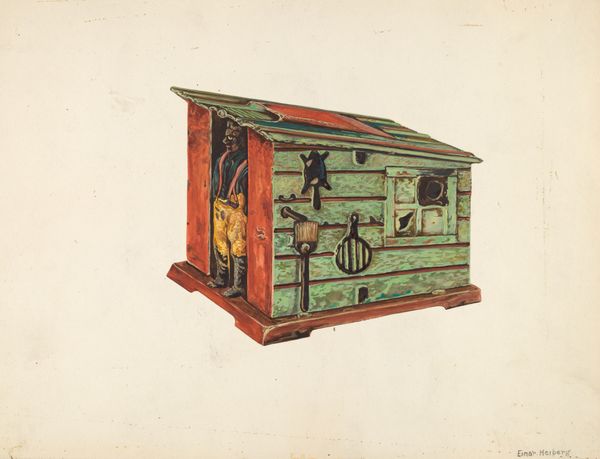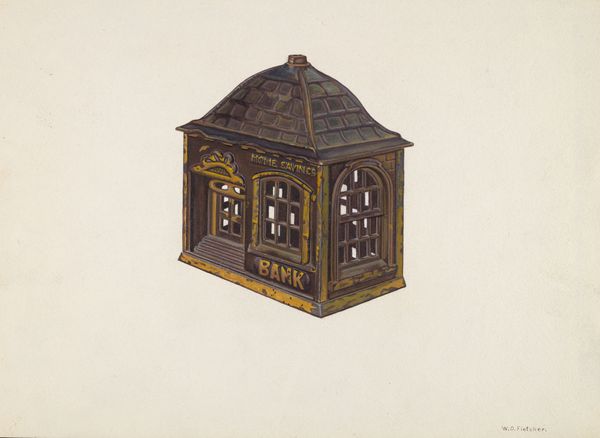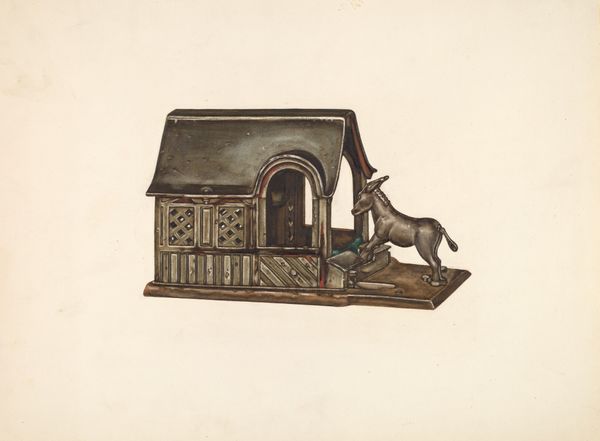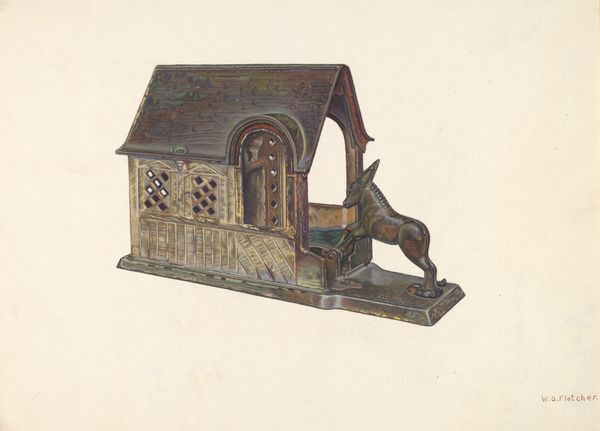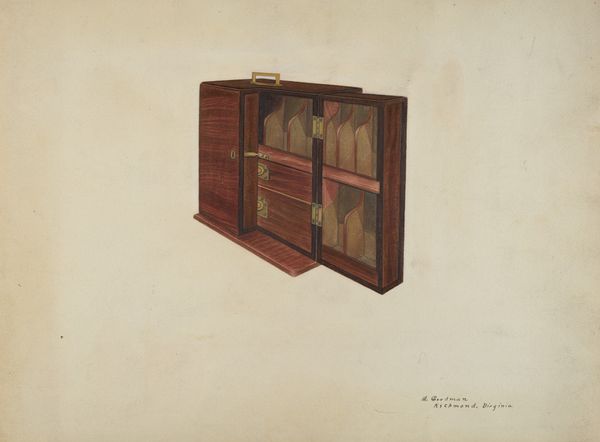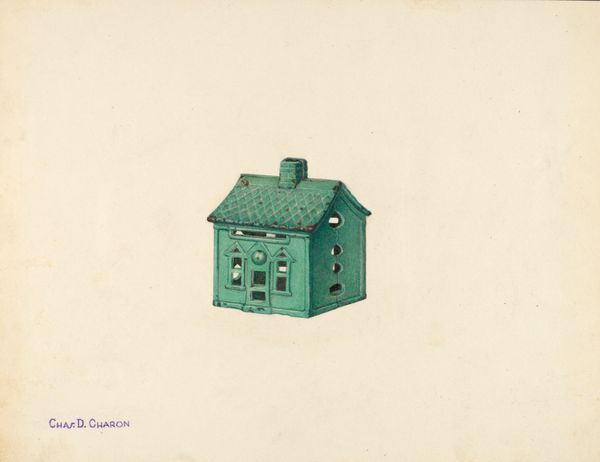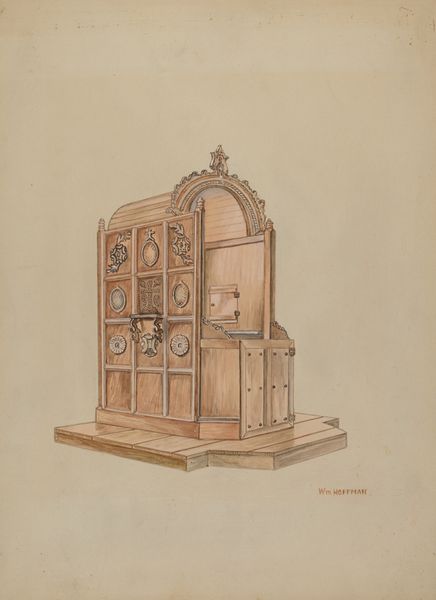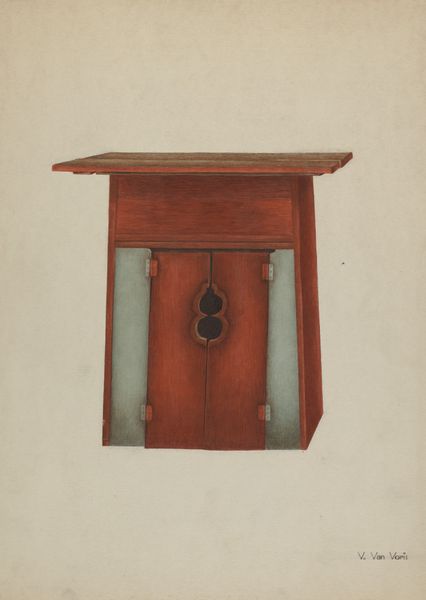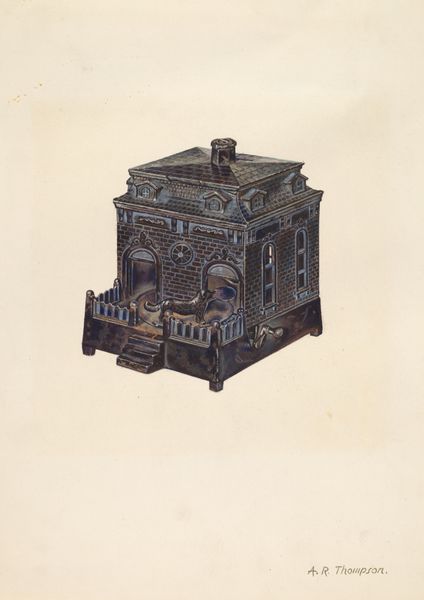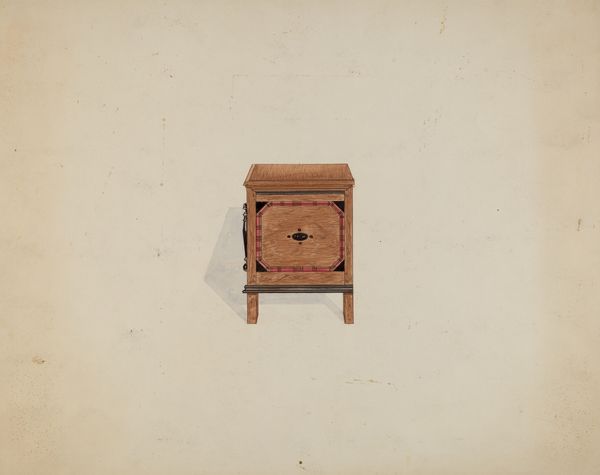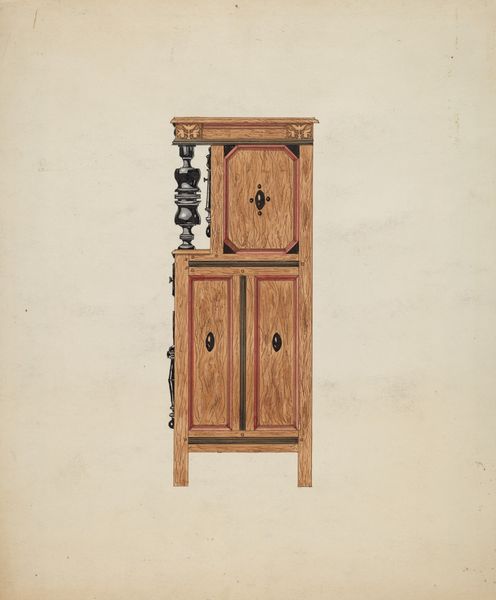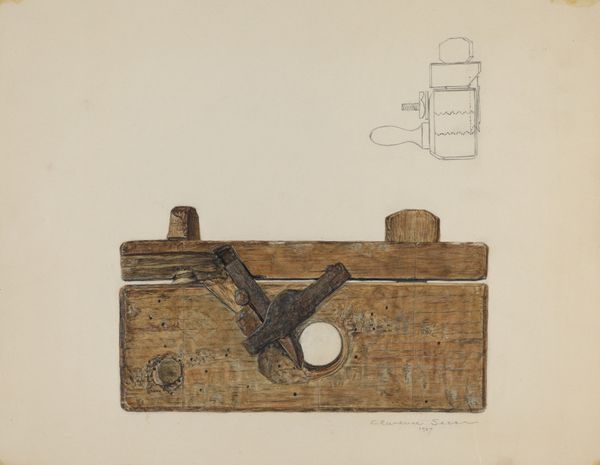
drawing, mixed-media, coloured-pencil
#
portrait
#
drawing
#
mixed-media
#
coloured-pencil
#
figuration
#
coloured pencil
#
genre-painting
#
watercolor
Dimensions: overall: 30.5 x 40.7 cm (12 x 16 in.) Original IAD Object: 3 3/4" high; 2 3/4" wide; 4 1/2" long
Copyright: National Gallery of Art: CC0 1.0
Editor: This is "Toy Bank: Man in a Cabin," made around 1937, using colored pencils and mixed media. The colors feel almost cartoonish, yet the detail on the cabin makes it look realistic. What's your perspective on this curious artwork? Curator: The integration of a functional object – a toy bank – immediately foregrounds the art's connection to the means of production and consumption during the 1930s. The deliberate, almost folk-art style begs the question: Was this created as a prototype, exploring mass-production feasibility, or a handcrafted, singular object that challenges mass consumption? Editor: That's an interesting way to frame it. The attention to details like the tools hanging on the wall makes it seem too artisanal to be a prototype for mass production. Curator: Precisely. And consider the medium itself - mixed media and colored pencil. There’s an element of labor and materiality here that challenges conventional distinctions between "high art" and craft. What kind of social narrative emerges from such a tension? Does it imply a democratization of art, accessible means, or something else? Editor: Maybe a yearning for simpler, more tangible times during the Depression Era? Almost like a pre-industrial sentimentality toward craftsmanship and simpler objects. Curator: Perhaps. We also cannot ignore how it could question modes of art creation and distribution in a quickly industrializing society. The piece could critique mechanized forms, by championing handcrafted objects as art forms worthy of our attention and financial investments represented through toy banks. Editor: I've learned a great deal. Seeing the means of creation really changes how you view it. Thanks for this point of view! Curator: Absolutely, It is crucial to comprehend how process shapes art, prompting us to consider how it impacts culture.
Comments
No comments
Be the first to comment and join the conversation on the ultimate creative platform.
